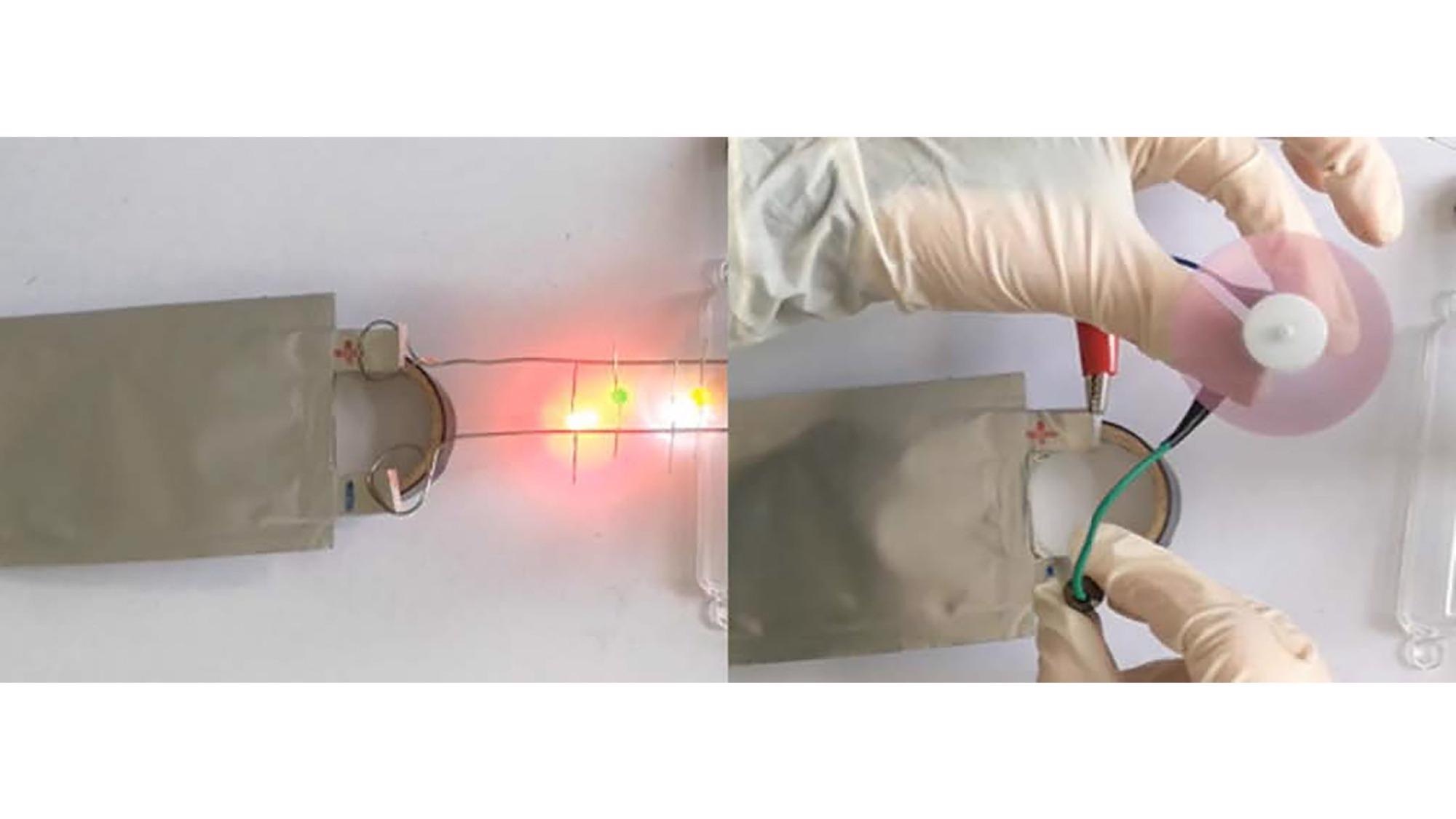Jan 13 2021
Sodium-ion batteries are regarded as a possible substitute for lithium batteries. However, the anodes, or the positively charged electrodes, that function well for lithium-ion batteries do not exhibit the same performance level for sodium-ion batteries.
 A homemade softpack sodium-ion battery made by the researchers. Image Credit: Jiangping Tu, Yuqian Li, Liyuan Zhang, Xiuli Wang, Xinhui Xia, Dong Xie, and Changdong Gu.
A homemade softpack sodium-ion battery made by the researchers. Image Credit: Jiangping Tu, Yuqian Li, Liyuan Zhang, Xiuli Wang, Xinhui Xia, Dong Xie, and Changdong Gu.
Amorphous carbon, which does not have a crystalline structure, is considered a viable anode since it includes voids and defects that can be leveraged to store sodium ions. Moreover, nitrogen- or phosphorus-doped carbon provides attractive electrical properties.
In a study published in the journal Applied Physics Reviews, from AIP Publishing, Chinese scientists from Zhejiang University, Ningbo University, and the Dongguan University of Technology explain how fundamental physical concepts of atomic scale were used to construct high-performance anodes for sodium-ion batteries.
Recent studies have shown that doped amorphous carbon, especially electron-rich element-doped amorphous carbon, is a good anode for sodium storage. But there was no common explanation for how sodium storage works or the doping effect of doped carbon.
Jiangping Tu, Researcher, Zhejiang University
To find solutions, the team employed the concept of energy level orbitals to describe the affinity of pyrrolic nitrogen and a phosphorus-oxygen bond, their electron distribution, atomic interaction, and electron cloud configuration.
The researchers employed first-principles calculations—a technique that involves using fundamental physical quantities to evaluate physical properties—to gain in-depth insights into the unique storage behavior. It depends on the electron density function, a quantum mechanical concept that can disclose the molecular structure of a crystal.
When the system chemical parameters, electron distribution, and adsorption energies of sodium ions fixed inside modified carbon materials were analyzed, the researchers discovered that pyrrolic nitrogen and phosphorus-oxygen bonds exhibit actual potential for sodium storage.
Sodium ions tend to be stored within these two structures.
Jiangping Tu, Researcher, Zhejiang University
The team has developed a hydrothermal treatment to construct the precursor of a phosphorus-oxygen structure and then used a dual electron-rich element to dope a carbon anode.
It exhibits, “enhanced electrochemical performance in cycle life and capacity for batteries,” added Tu.
Their anode reached a life cycle of 5,000 cycles, with a reduced capacity loss (0.003%/cycle) and improved capacity of 220 mAh/g.
Our work fills the theoretical gap about the sodium storage behavior of electron-rich element-doped amorphous carbon and provides the experimental basis for using carbon. We provide directions to modify carbon materials for large-scale sodium-ion batteries.
Jiangping Tu, Researcher, Zhejiang University
Journal Reference:
Li, Y., et al. (2021) Sodium-storage behavior of electron-rich element-doped amorphous carbon. Applied Physics Reviews. doi.org/10.1063/5.0029686.